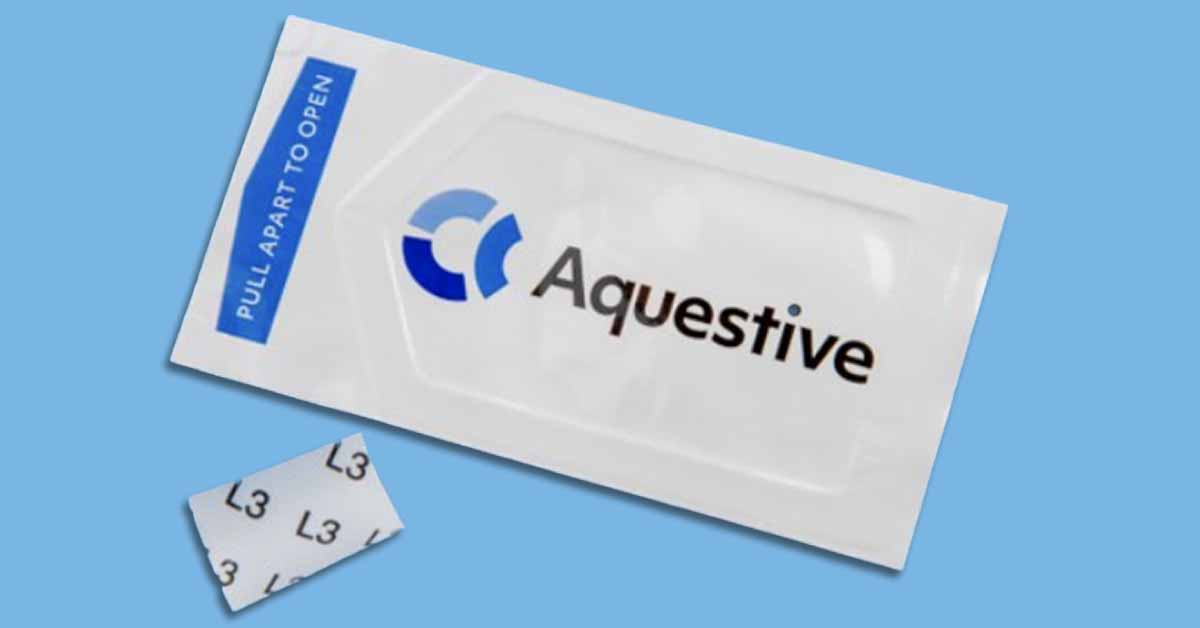Aquestive Therapeutics held an investor webcast yesterday to update the public on the current status of their sublingual emergency epinephrine candidate. Rather than a jab to the thigh with an auto-injector when anaphylaxis is suspected, the company hopes to offer a small strip that when placed under the tongue, releases epinephrine as it dissolves.
The opening of the webcast provided a quick tutorial on how the current parameters for emergency epinephrine have been set. Because anaphylaxis can manifest without warning, it is impossible to study the appropriate dosage to combat the symptoms without eliciting a reaction intentionally which would not be ethical. So the current dosages have been established largely by trial and observation, which would partially explain why more than one dose is sometimes needed.
So how will the FDA determine whether Aquestive’s candidate meets the goal of an effective treatment for anaphylaxis? By comparing the pharmacodynamics (how a drug affects the body) and pharmacokinetics (how the body breaks down a drug) with epinephrine auto-injectors.
The two primary factors to be compared are Cmax and Tmax. Cmax is the maximum concentration of the drug reached in the blood plasma, and Tmax is the time it takes to reach that concentration. For auto-injectors, those two factors vary widely depending on the patient’s physiology.
Aquestive’s Phase 1 clinical trial of their AQST-108 candidate showed that sublingual epinephrine is quickly absorbed by the body and reaches therapeutic concentrations in the blood, but Cmax and Tmax lag somewhat behind the averages achieved by epinephrine delivered via auto-injectors, although there was far less variability.
Aquestive will meet with the FDA to discuss AQST-108 in the second half of this year. In the meantime, the company has formulated a new candidate, AQST-109, which promises significantly better Cmax and Tmax. Aquestive anticipates conducting and completing a single ascending dose pharmacokinetics study in the second half of 2021. Based upon receiving favorable topline results from the study, Aquestive intends to request a pre-IND meeting with the FDA.
To boil this all down, Aquestive may already have a viable drug candidate in AQST-108 to move forward with Phase 2 clinical trials, and AQST-109 will provide a second path.
Said Dan Barber, Chief Operating Officer of Aquestive:
Aquestive is, we believe, the first and only company that has successfully demonstrated a repeatable and predictable capability for orally administering a film for the delivery of systemic epinephrine as indicated by the results from the two completed Phase 1 PK trials with AQST-108 that will be shared at today’s R&D event.
We have taken the learnings from the AQST-108 studies regarding absorption and conversion and have applied them to the development of our second generation prodrug, AQST-109. We plan to commence a Phase 1 PK trial with AQST-109 and anticipate a topline data readout in the second half of 2021.
Said Keith Kendall, President and CEO of Aquestive:
Today is an exciting day for the Aquestive team. Now that we have completed the submission of our initial patent applications, we are thrilled to provide our various stakeholders more insight into our scientific and clinical efforts to develop treatments for anaphylaxis. As we will discuss during our R&D event today, patients, caregivers, and healthcare providers remain highly interested in non-invasive routes of delivery for systemic epinephrine. Our surveys show that 80% of patients surveyed are interested in PharmFilm replacing their current medical device and 96% of patients surveyed believe that PharmFilm would be easier to administer during an emergency situation when compared to their current medical device.
If you are interested in replaying the webcast, it will be available for the next 30 days on Aquestive’s site by clicking here.
- INVESTOR & ANALYST VIRTUAL EPINEPHRINE DRUG DELIVERY R&D EVENT — Aquestive Therapeutics
- Aquestive Therapeutics Successfully Demonstrates Repeatable and Predictable Oral Sublingual Film Administration of Epinephrine — Company Press Release





